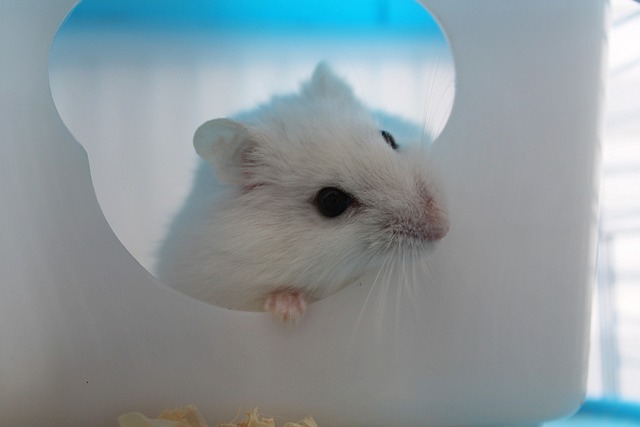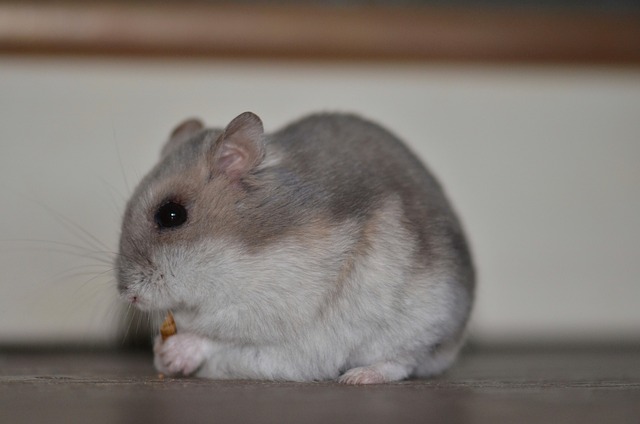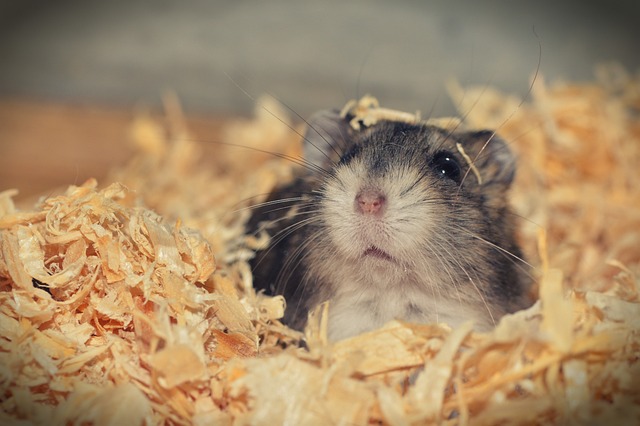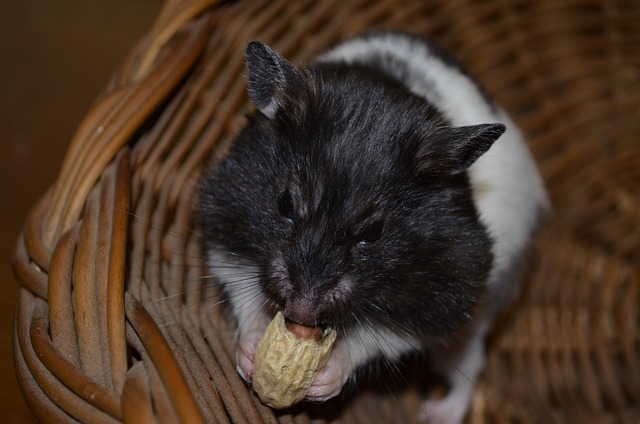What is the disadvantage of having a hamster – Hamsters.pk
Short Lifespan: The Emotional Toll of Losing a Beloved Pet
When considering a pet, many people are drawn to the adorable and compact nature of hamsters. These small rodents can make wonderful companions, but it’s essential to be aware of one significant disadvantage: their relatively short lifespan. The emotional toll of losing a beloved hamster can be quite heavy, and it’s important to be prepared for this reality before bringing one into your life.
The Average Lifespan of a Hamster
On average, hamsters live between 2 to 3 years, with some species, like the Roborovski dwarf hamster, potentially reaching up to 4 years with proper care. Compared to other pets, such as cats and dogs, which can live well over a decade, the lifespan of a hamster is considerably shorter. This means that owners must be ready to say goodbye to their furry friend much sooner than they might expect.
Bonding with Your Hamster
Despite their small size, hamsters can form strong bonds with their owners. They are intelligent, curious creatures that can learn to recognize their owners and even respond to their names. As you spend time with your hamster, you’ll likely develop a deep attachment to them, making their eventual loss all the more difficult.
Coping with the Loss of a Hamster
Losing a pet, no matter how small, can be a devastating experience. The grief that comes with the loss of a hamster is valid and should not be dismissed. It’s essential to allow yourself time to mourn and process your emotions. Some coping strategies include:
- Memorializing your hamster: Create a special memorial, such as a photo album or a small garden stone, to honor your pet’s memory.
- Seeking support: Talk to friends, family, or a professional who understands the bond between humans and their pets.
- Remembering the good times: Focus on the happy memories you shared with your hamster and the joy they brought to your life.
Deciding to Bring Home Another Hamster
After losing a hamster, some owners may feel ready to open their hearts to another furry companion, while others may need more time to heal. There is no right or wrong answer, and it’s crucial to make the decision that feels best for you. If you choose to bring home another hamster, remember that each one is unique, and it’s unfair to expect them to be just like your previous pet.
In conclusion, while hamsters make wonderful pets, their short lifespan is a significant disadvantage that potential owners must consider. The emotional toll of losing a beloved hamster can be heavy, but by understanding and preparing for this reality, you can cherish the time you have with your tiny companion and honor their memory when they pass.

Nocturnal Nature: Dealing with Nighttime Noise and Activity
When considering a hamster as a pet, it’s essential to understand their natural behavior and habits. One significant aspect of hamster care that many new owners overlook is their nocturnal nature. Hamsters are most active during the night, which can lead to noise and activity that may disrupt your sleep or daily routine. In this article, we’ll explore the nocturnal nature of hamsters and provide tips on how to deal with their nighttime noise and activity.
Understanding Hamsters’ Nocturnal Behavior
In the wild, hamsters are prey animals, making them vulnerable to predators during daylight hours. To ensure their survival, they have evolved to be most active at night when it’s safer to forage for food and explore their surroundings. This instinctive behavior carries over to pet hamsters, who prefer to sleep during the day and become active in the evening and throughout the night.
Common Nighttime Activities
Hamsters engage in various activities during their waking hours, including:
- Wheel running: Most hamsters love to run on their exercise wheels, which can create a constant whirring sound.
- Foraging and digging: Hamsters explore their habitat, foraging for food and digging in their bedding, which may cause rustling noises.
- Chewing: Hamsters need to chew to keep their ever-growing teeth trimmed, and they may gnaw on toys or cage bars during the night.
Tips for Dealing with Nighttime Noise
If your hamster’s nocturnal activities are causing sleep disruptions or disturbing your household, consider the following tips:
- Place the cage in a suitable room: Keep your hamster’s cage in a room where their nighttime activity won’t disturb you or others, such as a spare bedroom or living room.
- Invest in a quiet exercise wheel: Some wheels are designed to minimize noise, such as those with enclosed, solid surfaces or ball-bearing mechanisms.
- Provide plenty of bedding: A deep layer of bedding can help muffle the sound of your hamster’s digging and foraging.
- Offer chew toys: Giving your hamster appropriate chew toys can help reduce the noise from gnawing on cage bars.
Creating a Sleep-Friendly Environment for Your Hamster
To ensure your hamster gets the rest they need during the day, create a sleep-friendly environment:
- Keep the cage in a quiet area: Place your hamster’s cage in a room with minimal daytime noise and activity.
- Provide a dark and cozy sleeping area: Offer your hamster a small hideout or sleeping box filled with soft bedding material.
- Avoid disturbing your hamster: Minimize handling and interaction during their sleeping hours to allow them to rest peacefully.
In conclusion, understanding and accommodating your hamster’s nocturnal nature is crucial for their well-being and your own peace of mind. By implementing these tips and creating a suitable environment, you can minimize nighttime noise and activity while ensuring your furry friend thrives in your care.
Habitat Maintenance: The Time and Effort Required for Proper Care
When bringing a hamster into your home, it’s crucial to understand the level of commitment required to maintain a clean, healthy, and stimulating habitat. Many new hamster owners underestimate the time and effort needed for proper care, leading to neglected habitats and potential health issues for their furry friends. In this article, we’ll discuss the importance of habitat maintenance and the tasks involved in keeping your hamster’s living space in top condition.
Why Habitat Maintenance is Essential
A well-maintained habitat is vital for your hamster’s health and happiness. Here’s why:
- Prevents health issues: A clean habitat reduces the risk of bacterial growth, respiratory problems, and other health concerns.
- Promotes natural behaviors: A properly arranged habitat with ample space and enrichment encourages your hamster to exhibit natural behaviors, such as foraging and exploring.
- Enhances overall well-being: A tidy and stimulating environment contributes to your hamster’s mental and physical well-being.
Daily Maintenance Tasks
To keep your hamster’s habitat in excellent condition, perform these tasks daily:
- Spot cleaning: Remove soiled bedding, uneaten food, and droppings from the cage using a small scoop or tissue.
- Replenishing food and water: Provide fresh food and clean water daily, ensuring that the water bottle is functioning correctly and free from blockages.
- Tidying up: Rearrange any scattered bedding, toys, or hideouts to maintain a clean and organized appearance.
Weekly Deep Cleaning
In addition to daily maintenance, set aside time each week for a thorough deep cleaning of your hamster’s habitat:
- Removing all contents: Take your hamster out of the cage and place them in a safe, secure area. Remove all bedding, toys, and accessories from the habitat.
- Washing and disinfecting: Clean the cage, toys, and accessories with a pet-safe disinfectant, rinse thoroughly, and allow them to dry completely.
- Replacing bedding: Fill the cage with fresh, clean bedding, ensuring a depth of at least 4-6 inches for burrowing.
- Rearranging the habitat: Place clean toys, hideouts, and accessories back into the cage, creating an engaging and stimulating environment for your hamster.
Time Commitment and Planning
Habitat maintenance requires a consistent time commitment. On average, daily tasks may take 5-10 minutes, while weekly deep cleaning can take 30-60 minutes, depending on the size and complexity of the habitat. To make habitat maintenance more manageable, consider:
- Creating a schedule: Set aside specific times for daily and weekly cleaning tasks to ensure consistency and help form a routine.
- Preparing supplies in advance: Keep all necessary cleaning supplies, fresh bedding, and replacement accessories on hand to streamline the maintenance process.
- Involving family members: Share the responsibility of habitat maintenance with family members, making it a team effort and teaching children valuable lessons about pet care.
In conclusion, proper habitat maintenance is essential for the health and happiness of your pet hamster. By understanding the time and effort required and establishing a consistent care routine, you can ensure your furry friend thrives in a clean, stimulating environment. Remember, a well-maintained habitat is a reflection of your commitment to being a responsible and loving pet owner.
Health Concerns: Common Illnesses and Veterinary Expenses
When considering a hamster as a pet, it’s essential to be aware of the potential health concerns and associated veterinary expenses. While hamsters are generally low-maintenance pets, they can still be susceptible to various illnesses and injuries that may require medical attention. In this article, we’ll explore some common health issues in hamsters and the financial implications of veterinary care.
Common Health Issues in Hamsters
- Respiratory infections: Hamsters are prone to respiratory infections, which can be caused by poor cage ventilation, excessive dust from bedding, or a weakened immune system. Symptoms may include sneezing, wheezing, and discharge from the nose or eyes.
- Digestive problems: Diarrhea, constipation, and other digestive issues can arise from improper diet, stress, or bacterial imbalances. Wet tail, a serious and potentially fatal condition, is characterized by severe diarrhea and a dirty, matted appearance around the tail area.
- Dental issues: Hamsters’ teeth grow continuously throughout their lives, and if not properly worn down through chewing, they can become overgrown, causing difficulty eating and other health problems.
- Skin conditions: Mites, ringworm, and other skin parasites can cause itching, hair loss, and skin irritation. Some skin conditions may be a result of poor habitat hygiene or an unbalanced diet.
- Tumors: Unfortunately, hamsters are susceptible to various types of tumors, both benign and malignant. Regular check-ups with a veterinarian can help detect any growths early on.
Finding a Hamster-Savvy Veterinarian
When your hamster experiences health issues, it’s crucial to seek the help of a veterinarian experienced in treating small exotic pets. Not all veterinary clinics have the knowledge or equipment necessary to properly care for hamsters. Research and locate a hamster-savvy veterinarian in your area before an emergency arises, so you can ensure prompt and appropriate care when needed.
Veterinary Expenses for Hamsters
The cost of veterinary care for hamsters can vary depending on the severity of the condition, required treatments, and your location. Some common expenses may include:
- Routine check-ups: Annual or semi-annual wellness exams can help detect potential health issues early on and typically cost between $30 to $50.
- Diagnostic tests: If your hamster is showing signs of illness, your veterinarian may recommend diagnostic tests such as blood work, X-rays, or fecal examinations. These tests can range from $50 to $200 or more.
- Medications and treatments: Depending on the condition, your hamster may require antibiotics, pain relief, or other medications. Treatment costs can vary widely but may range from $20 to $100 or more.
- Surgery: In some cases, such as tumor removal or dental procedures, surgery may be necessary. The cost of surgical treatments can be significant, often starting at $200 and potentially exceeding $500.
Budgeting for Veterinary Care

When bringing a hamster into your life, it’s essential to factor in the potential costs of veterinary care. Consider setting aside a portion of your budget for unexpected medical expenses or look into pet health insurance plans that cover exotic pets like hamsters. By being financially prepared, you can ensure that your furry friend receives the necessary care without causing undue stress on your finances.
In conclusion, while hamsters can make wonderful pets, it’s crucial to be aware of the potential health concerns and associated veterinary expenses. By familiarizing yourself with common illnesses, finding a hamster-savvy veterinarian, and budgeting for medical care, you can provide your tiny companion with the best possible care and ensure a happy, healthy life together.











